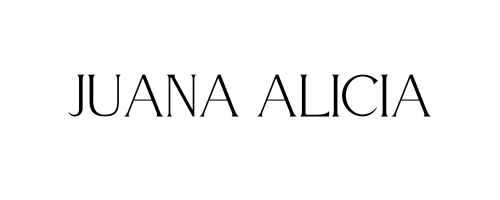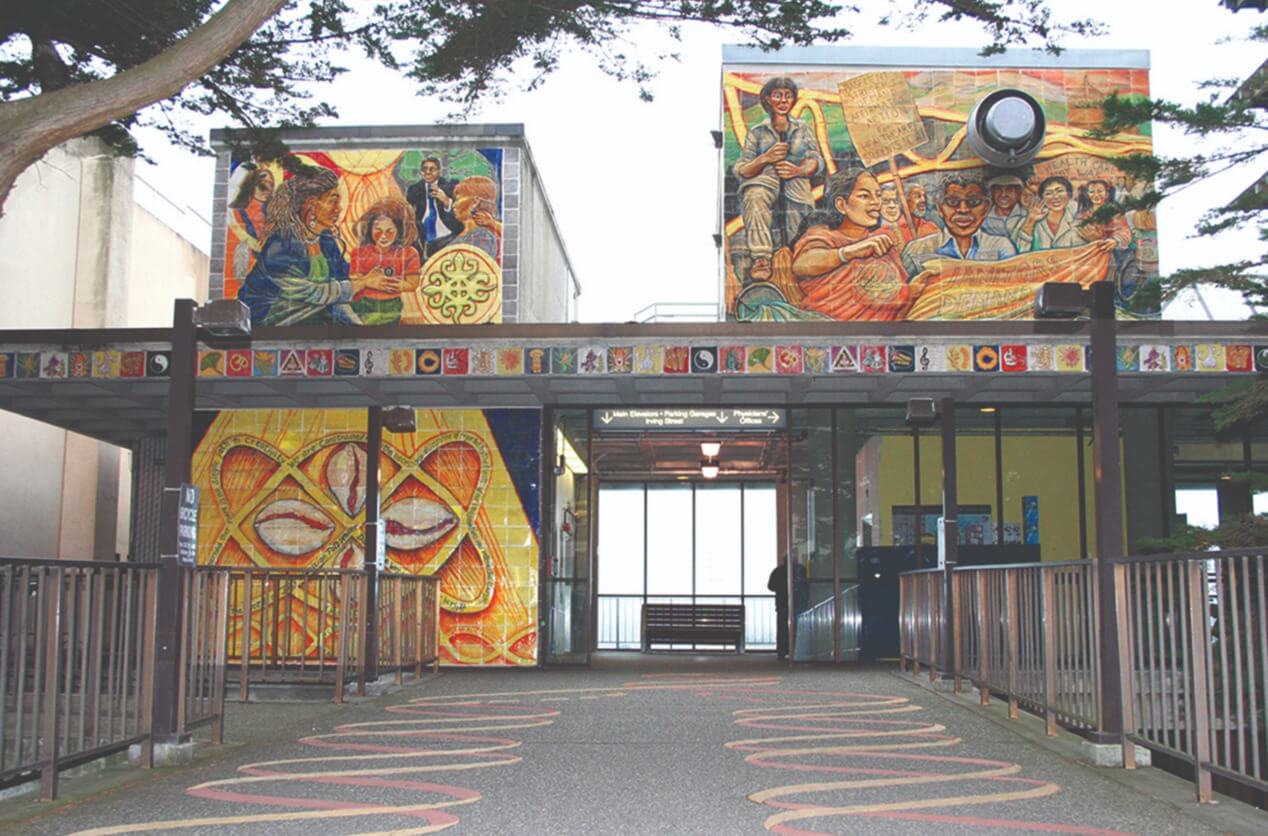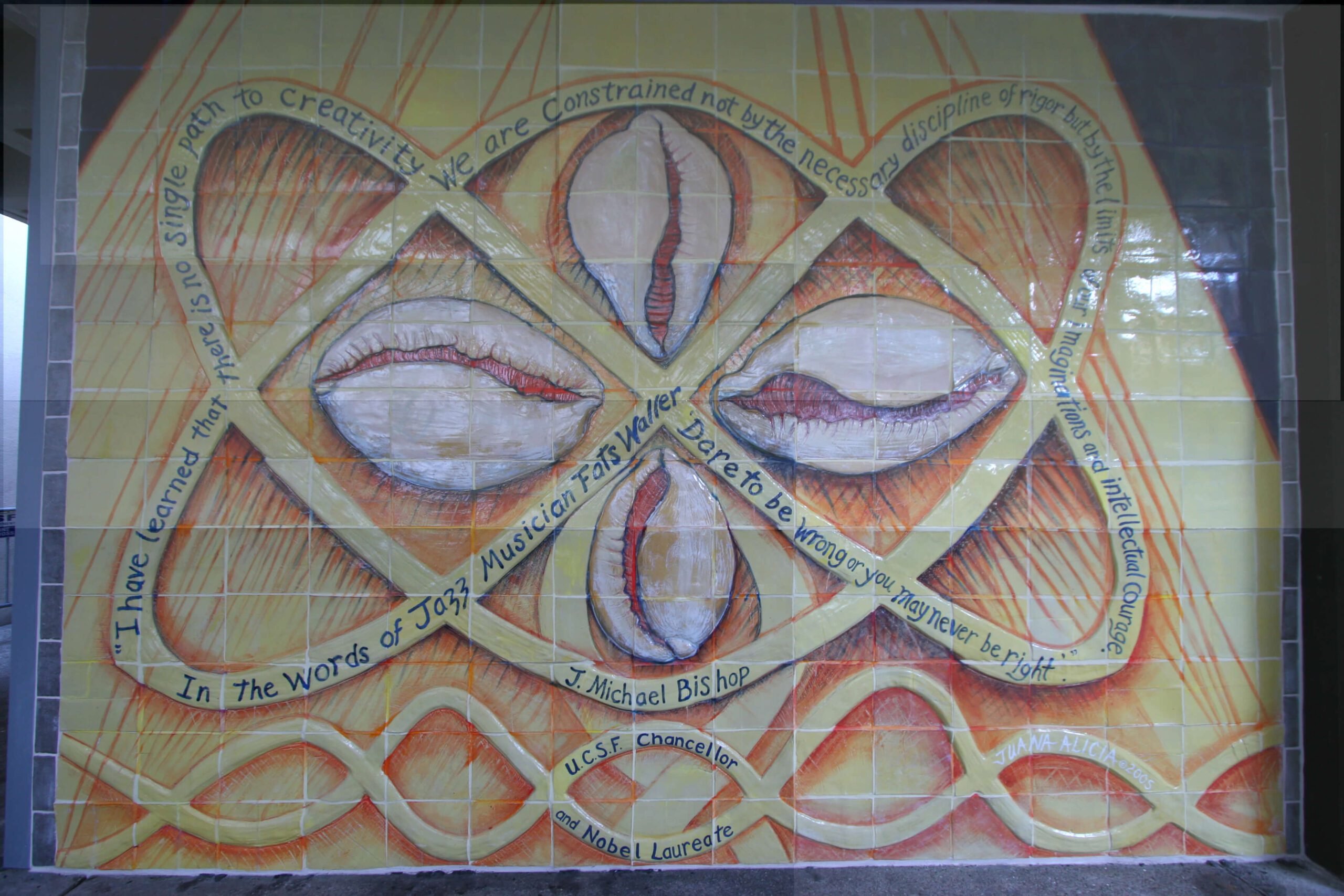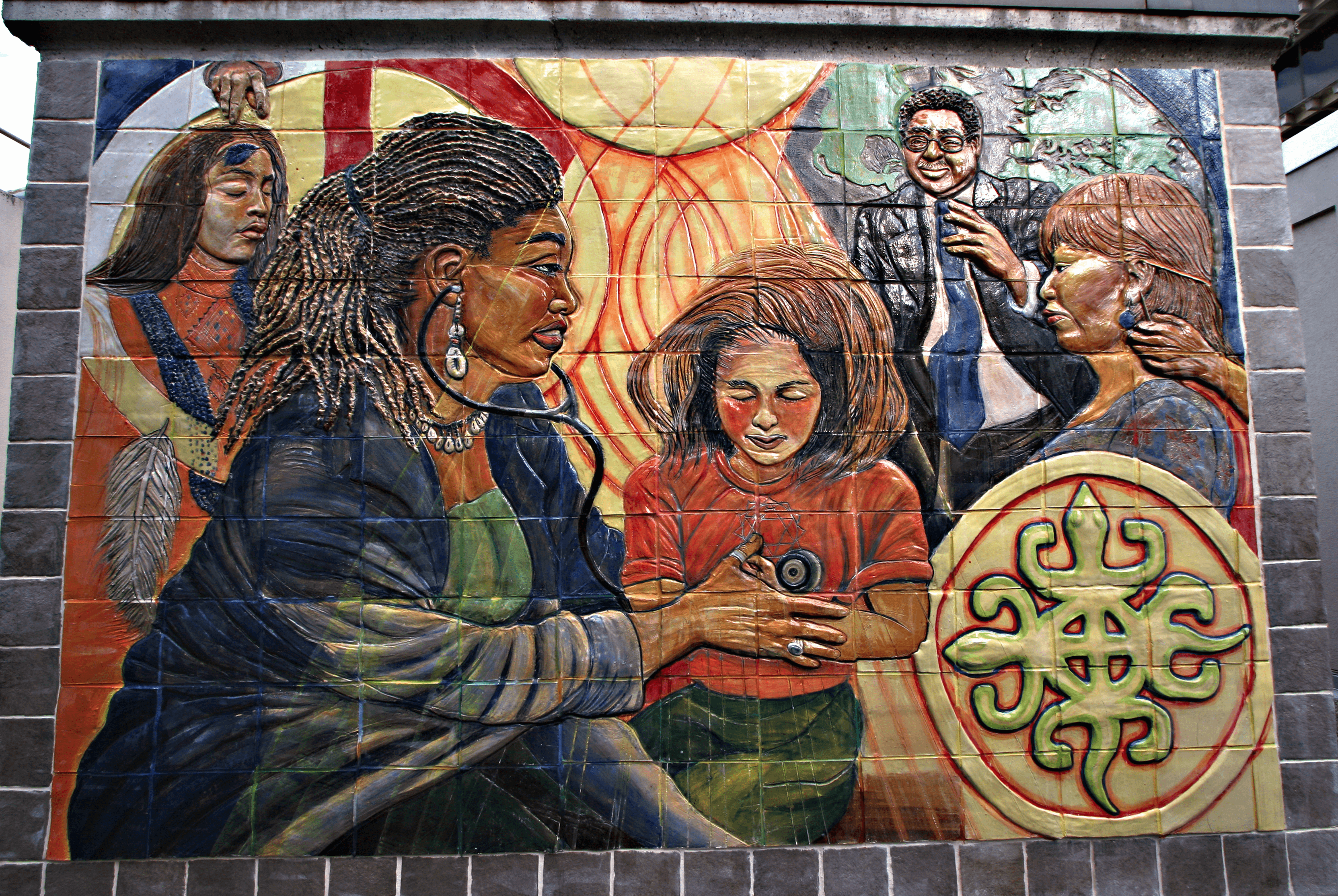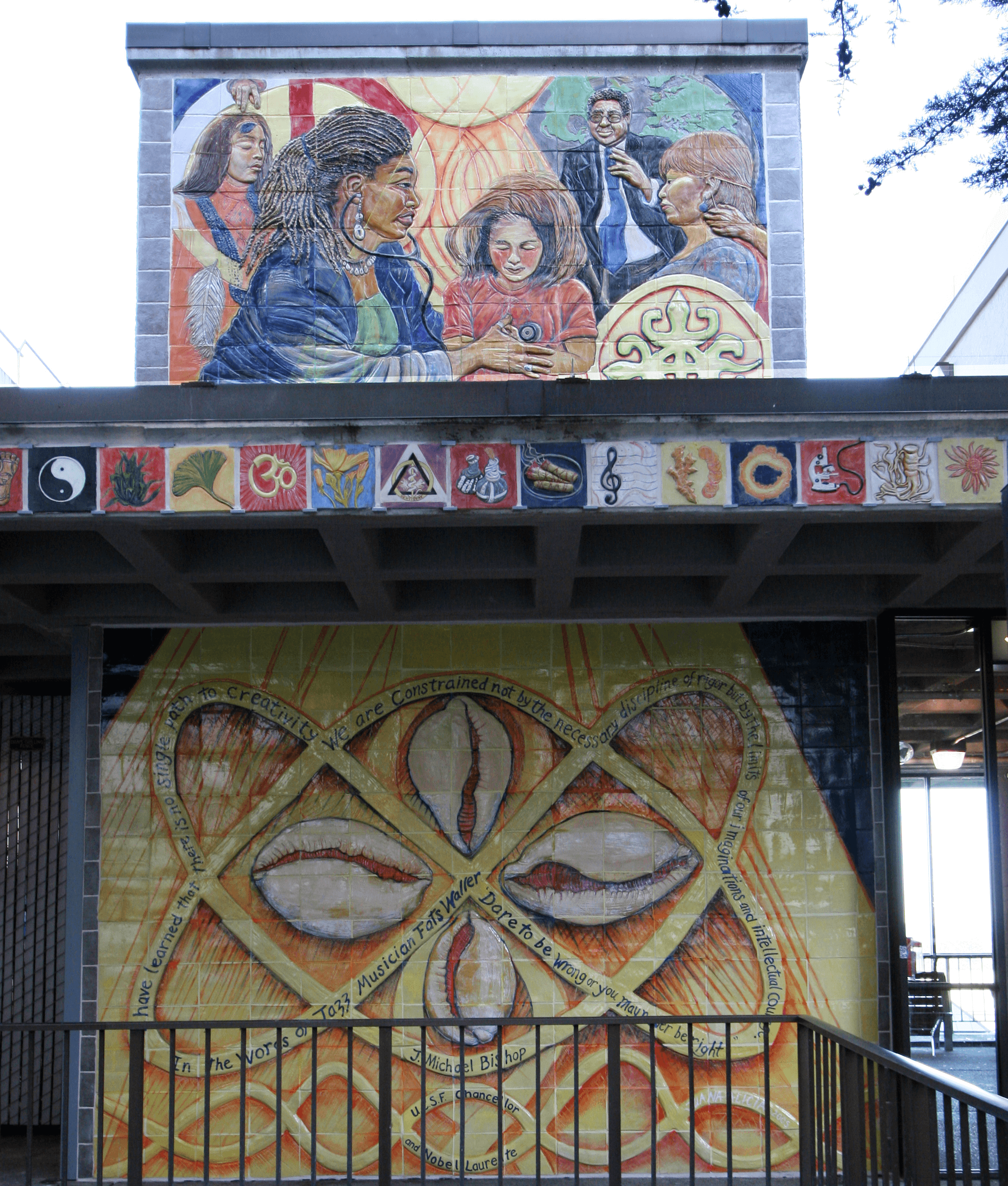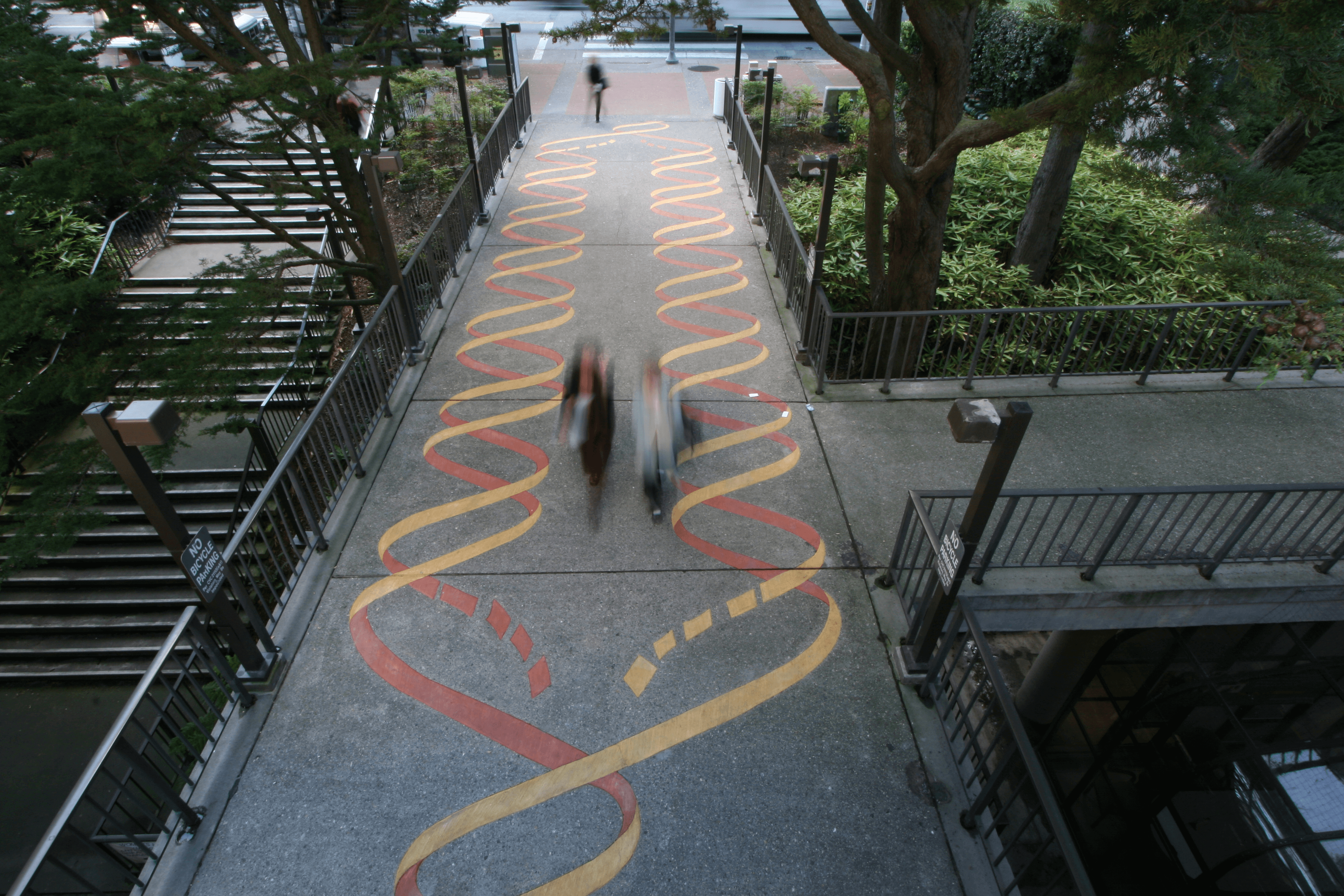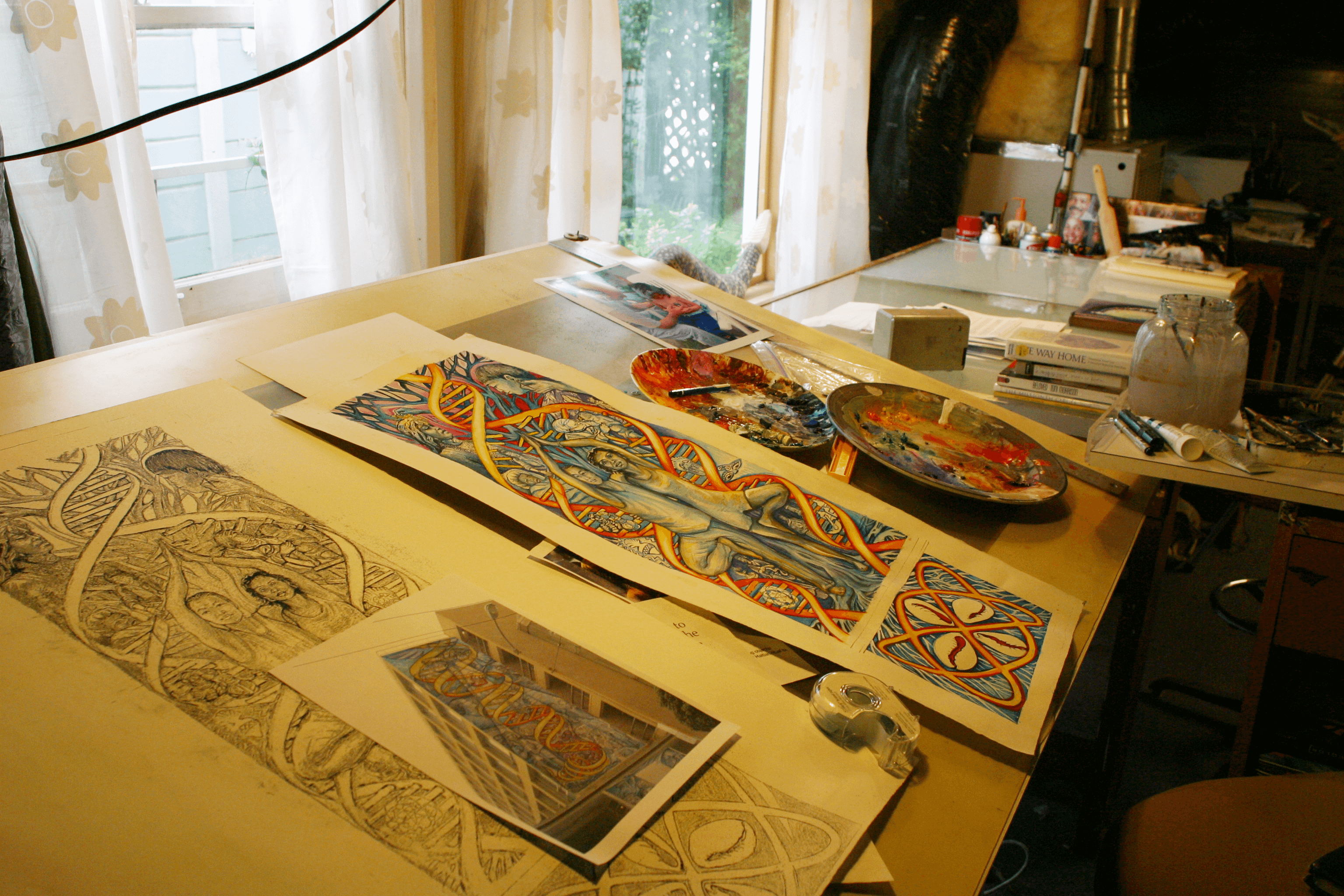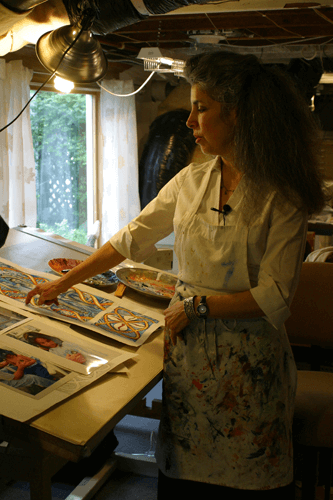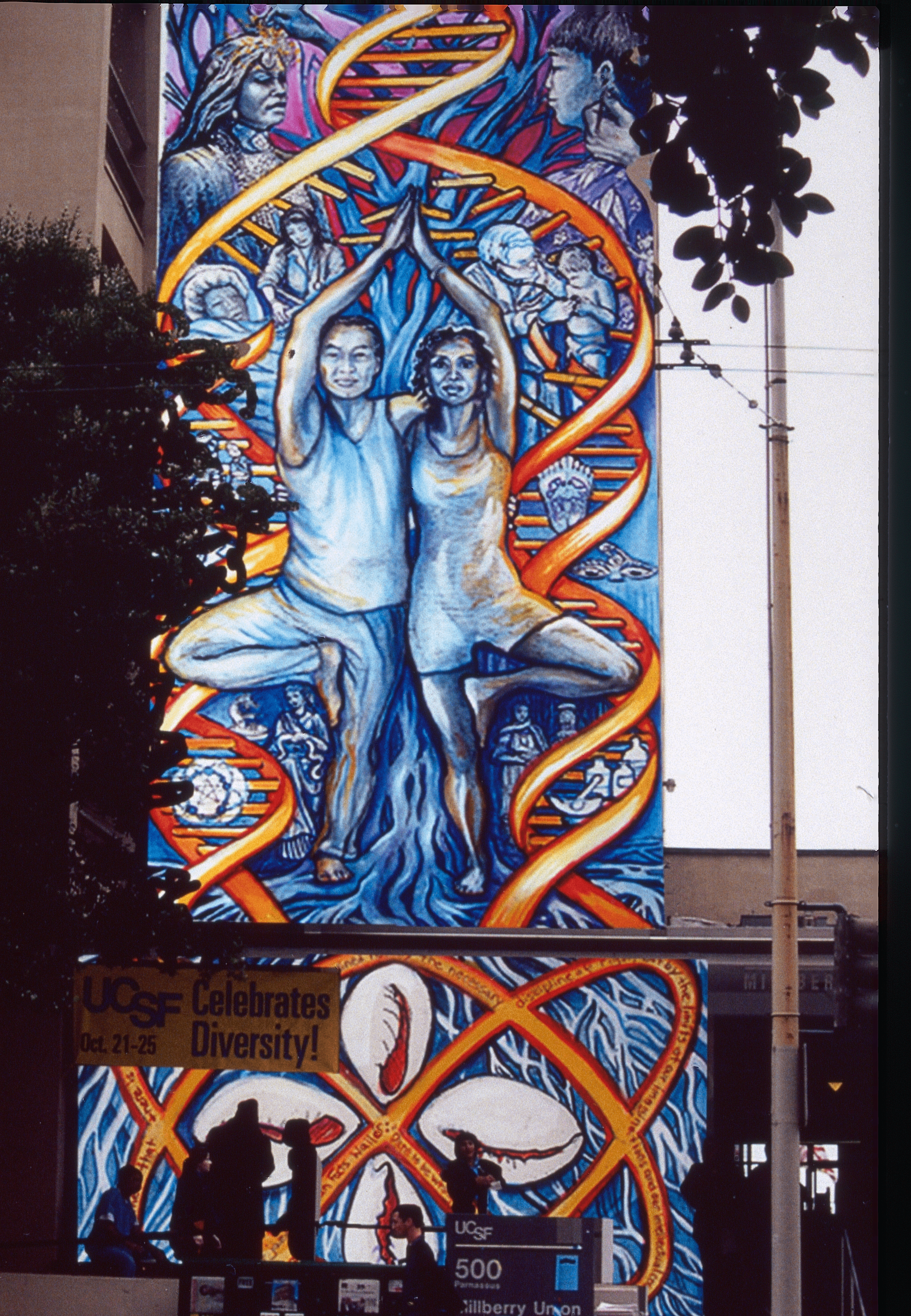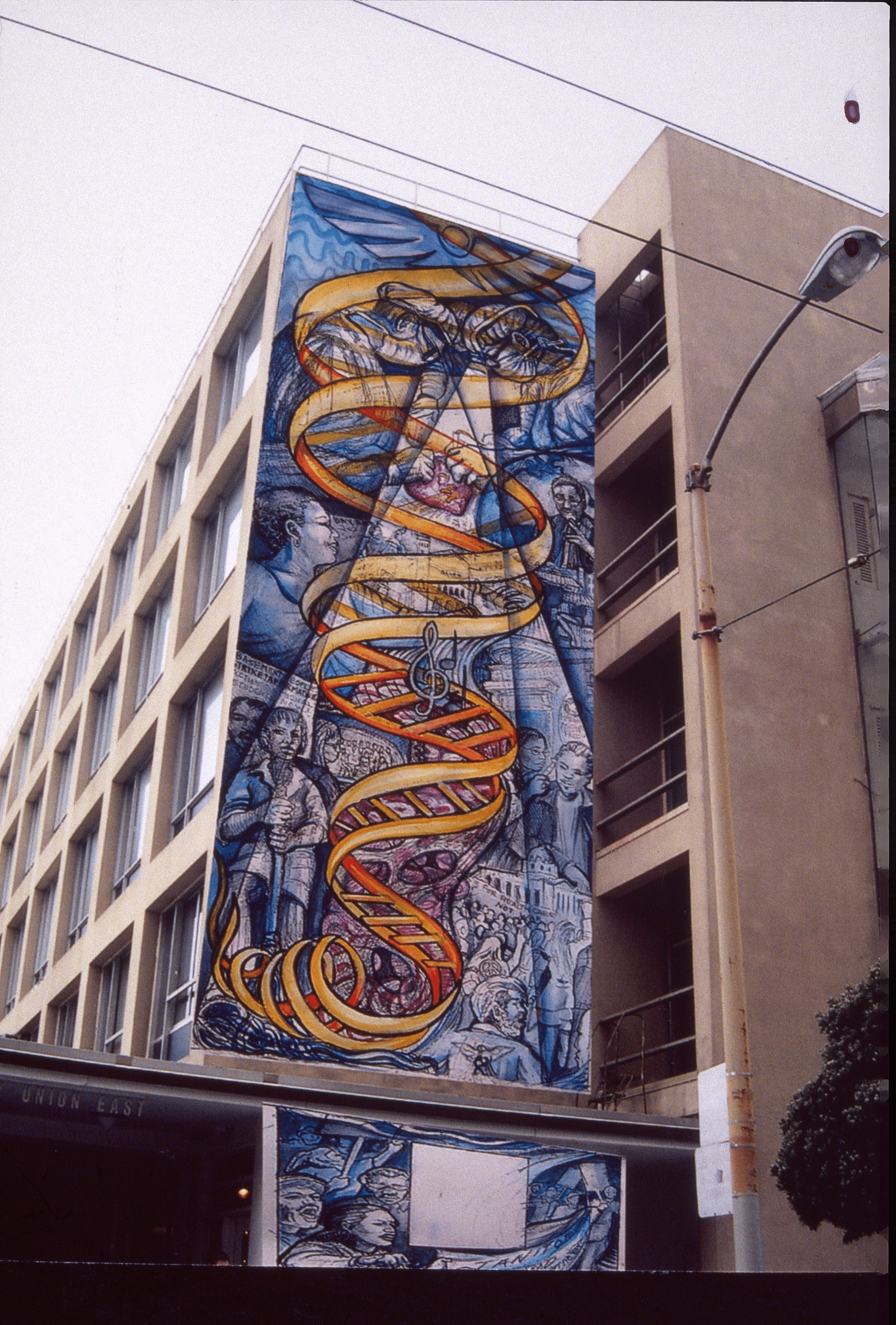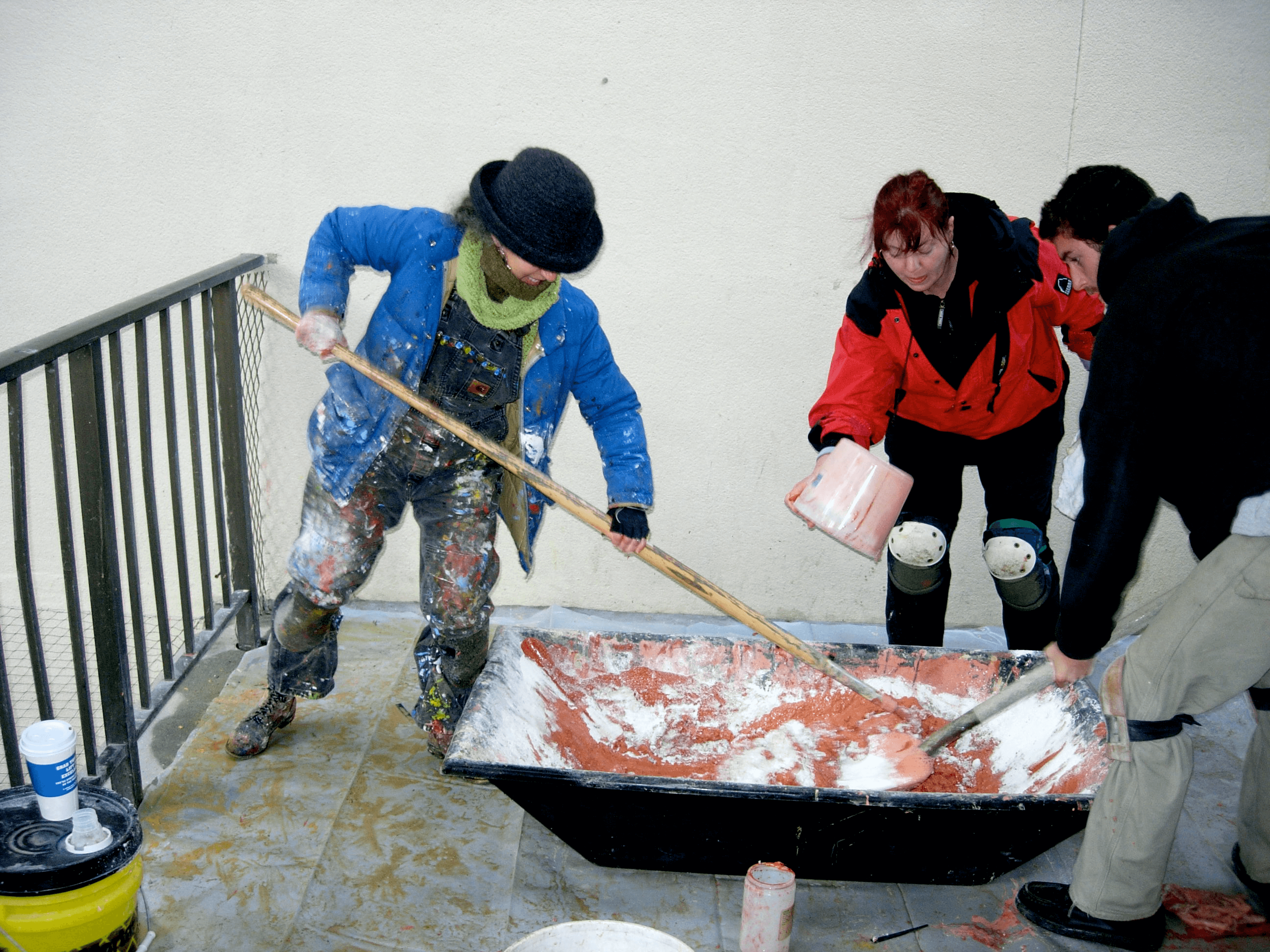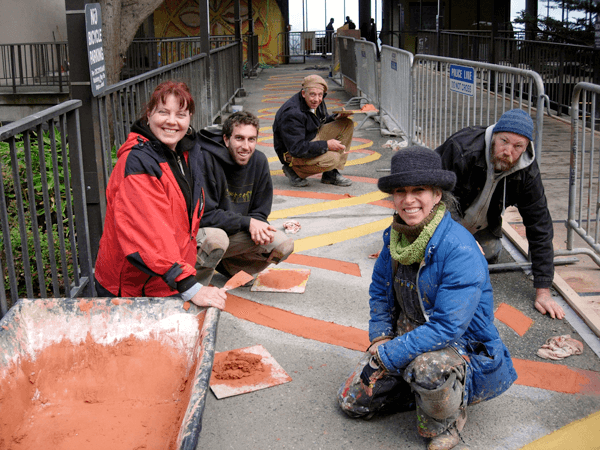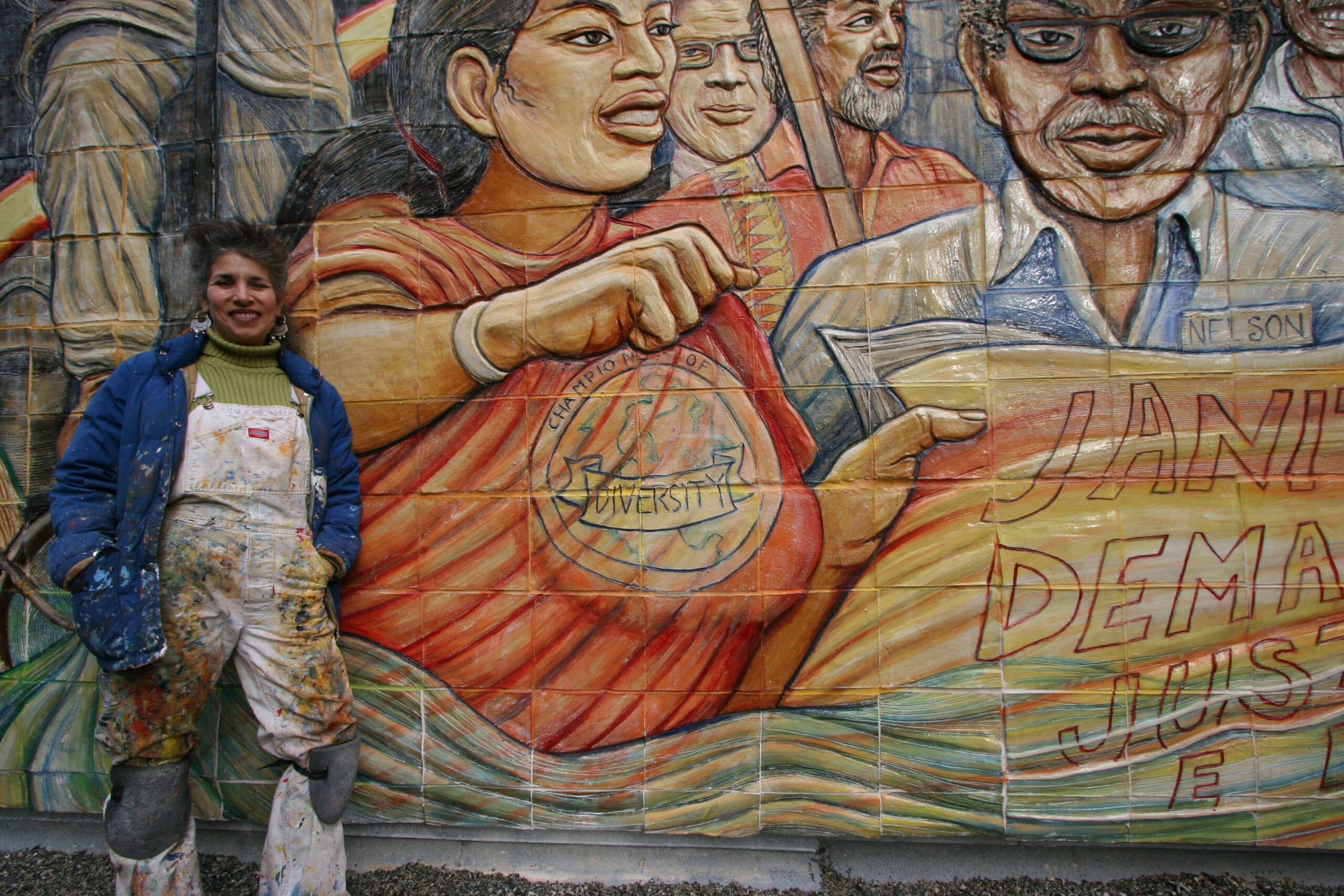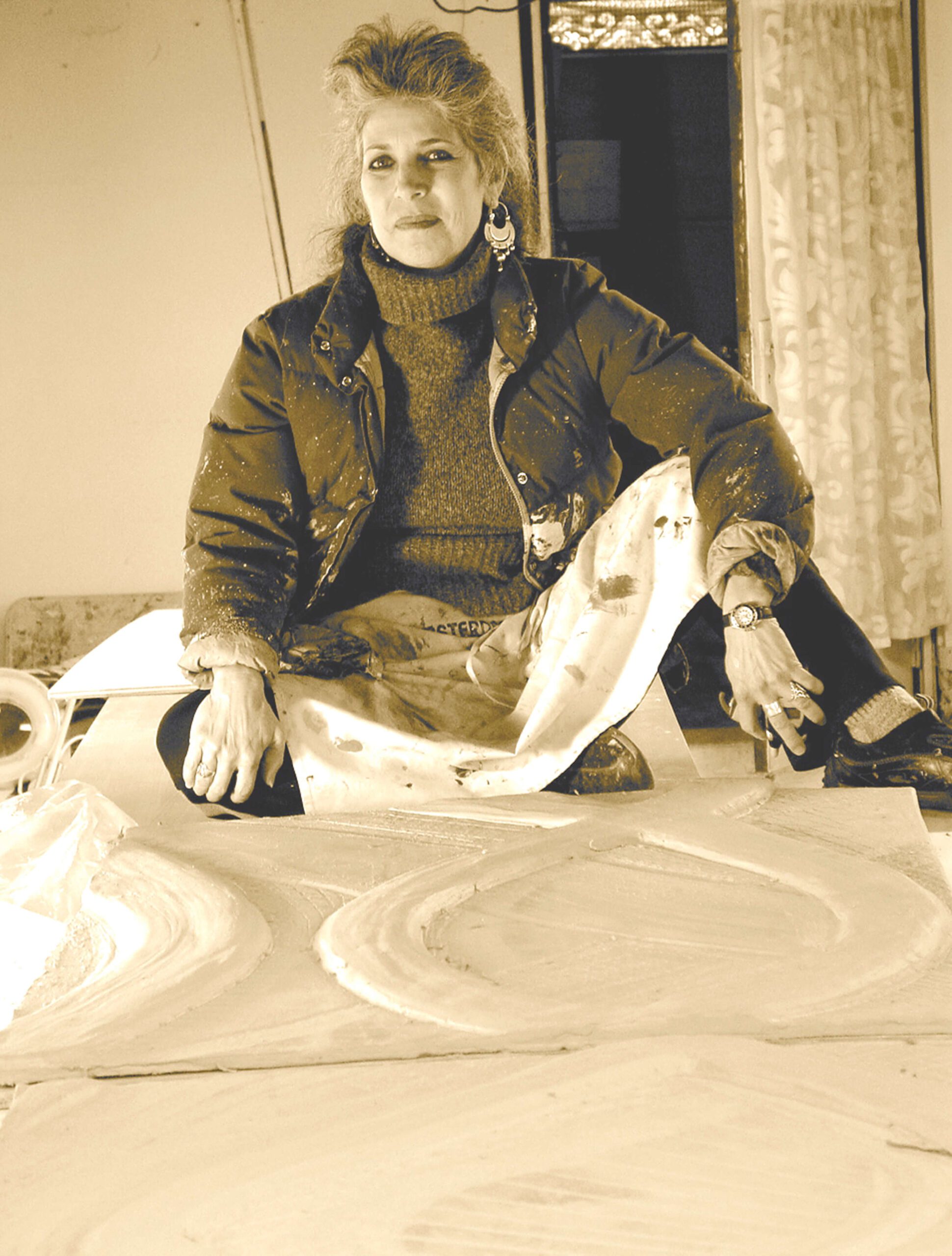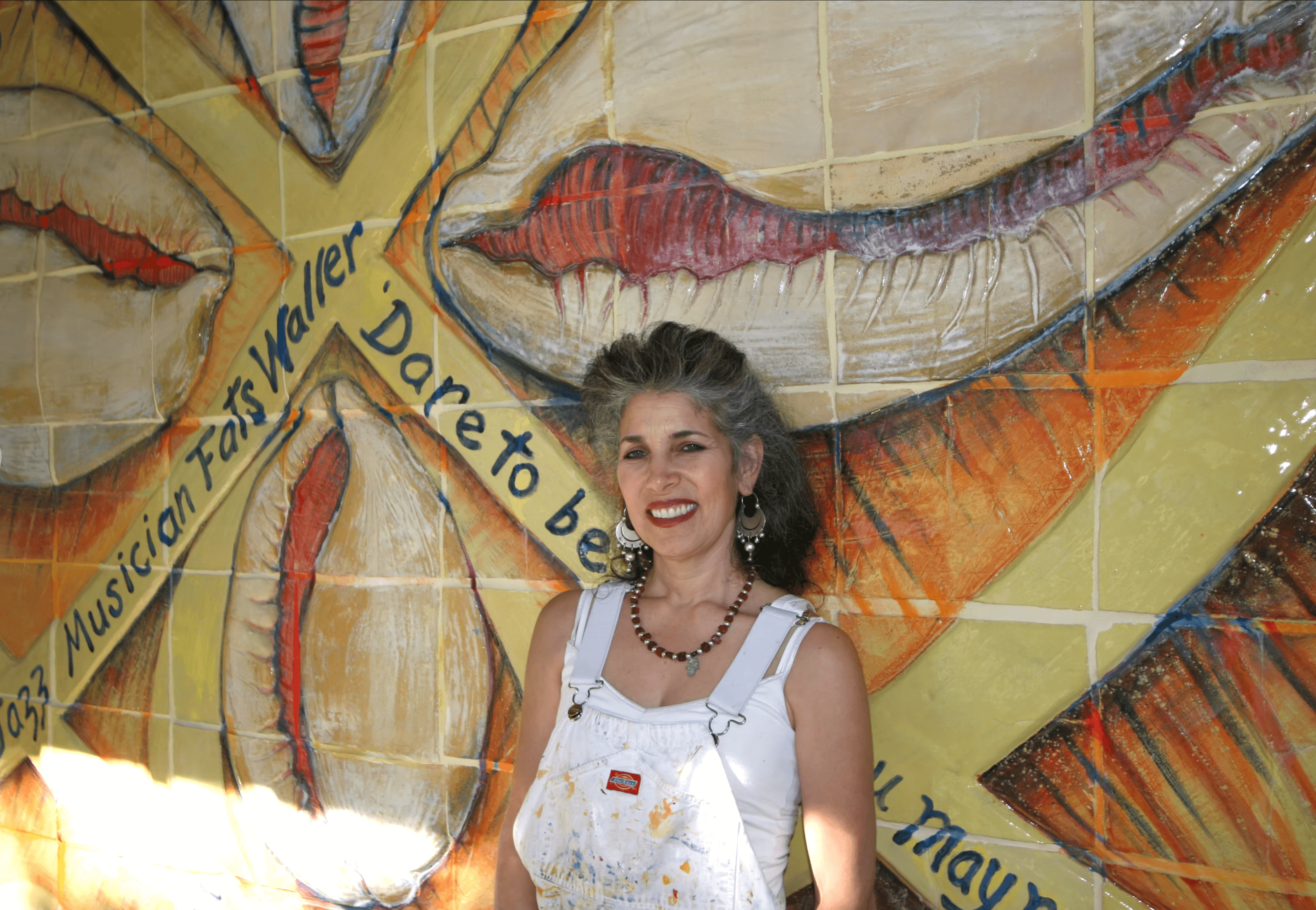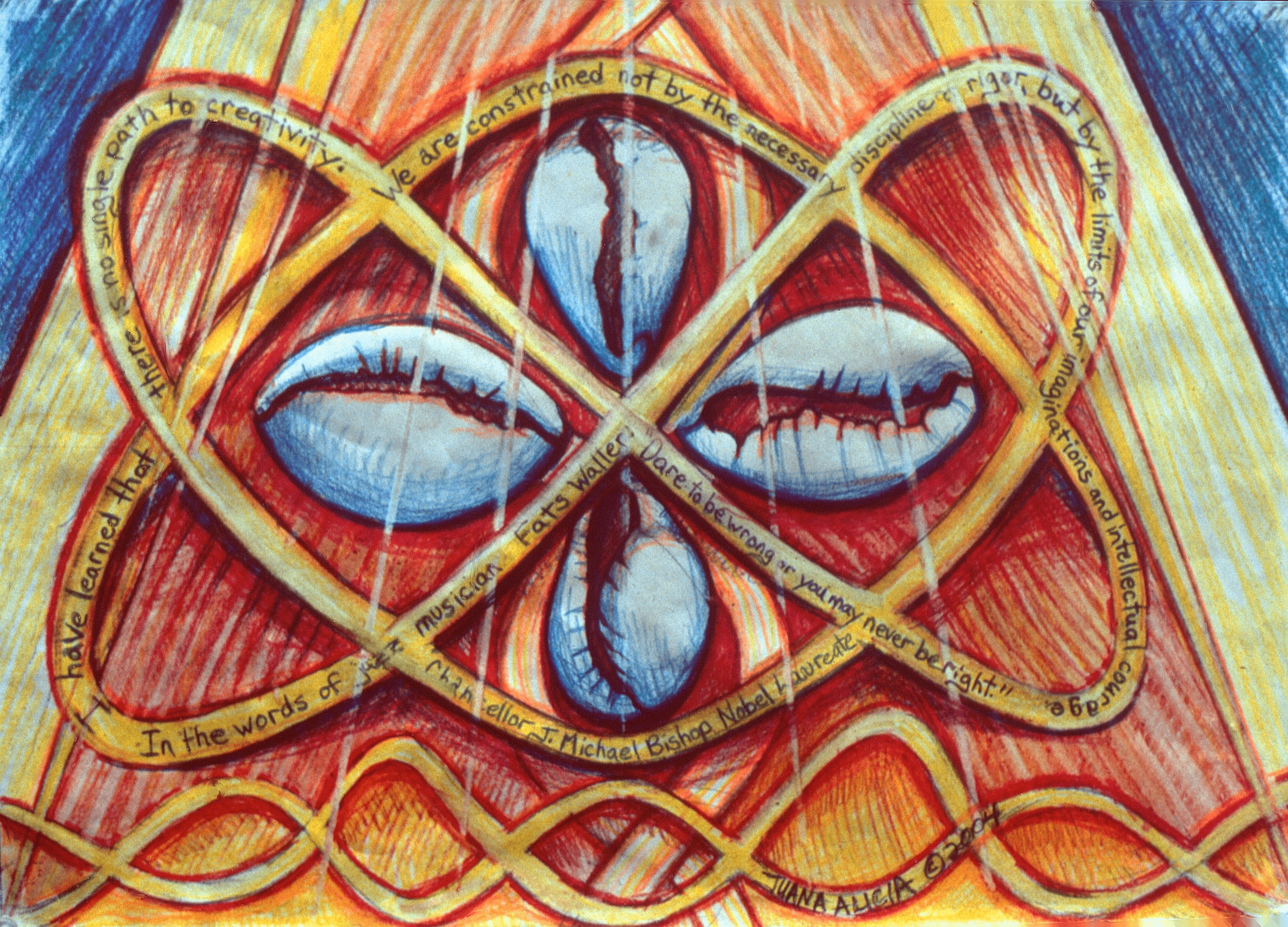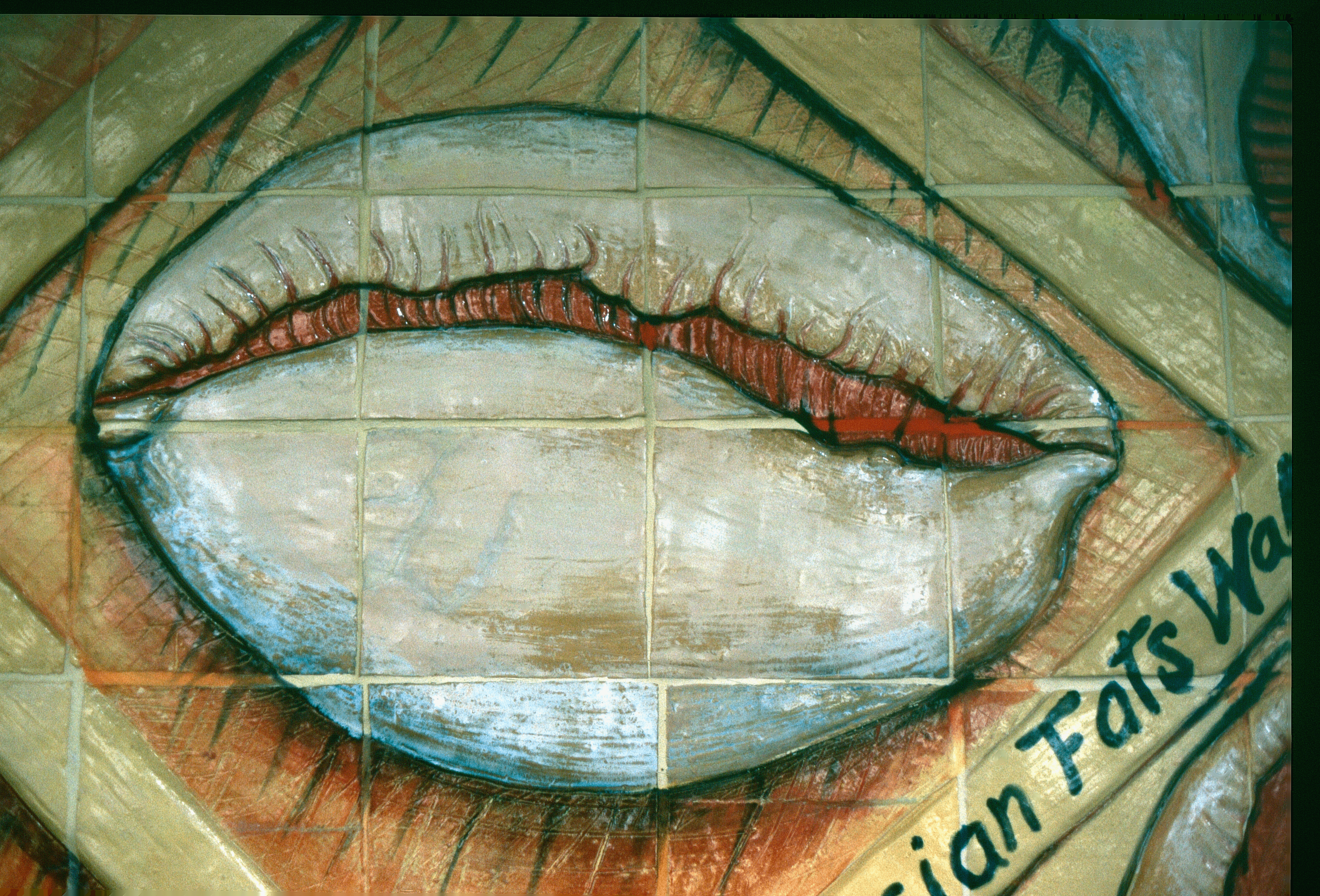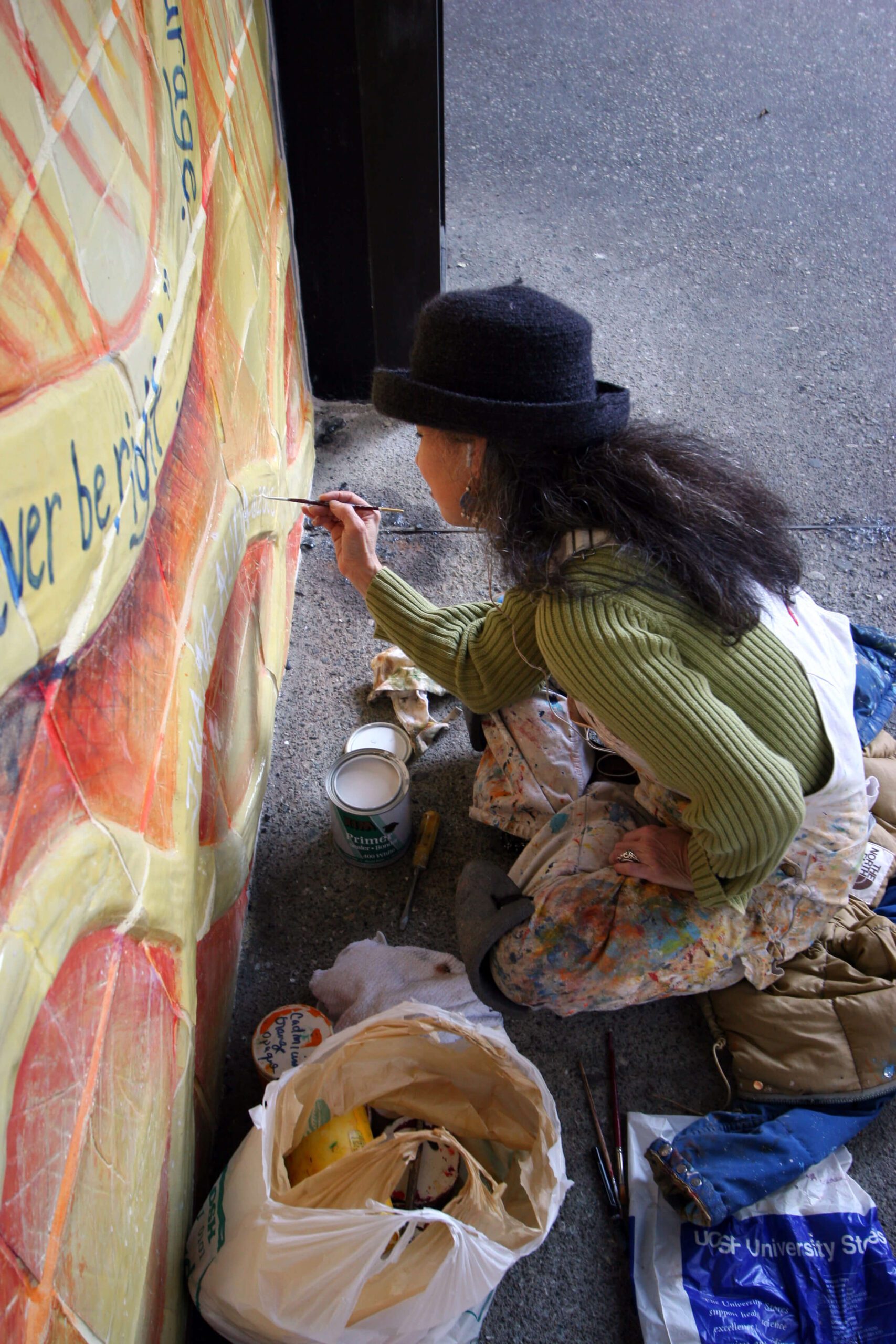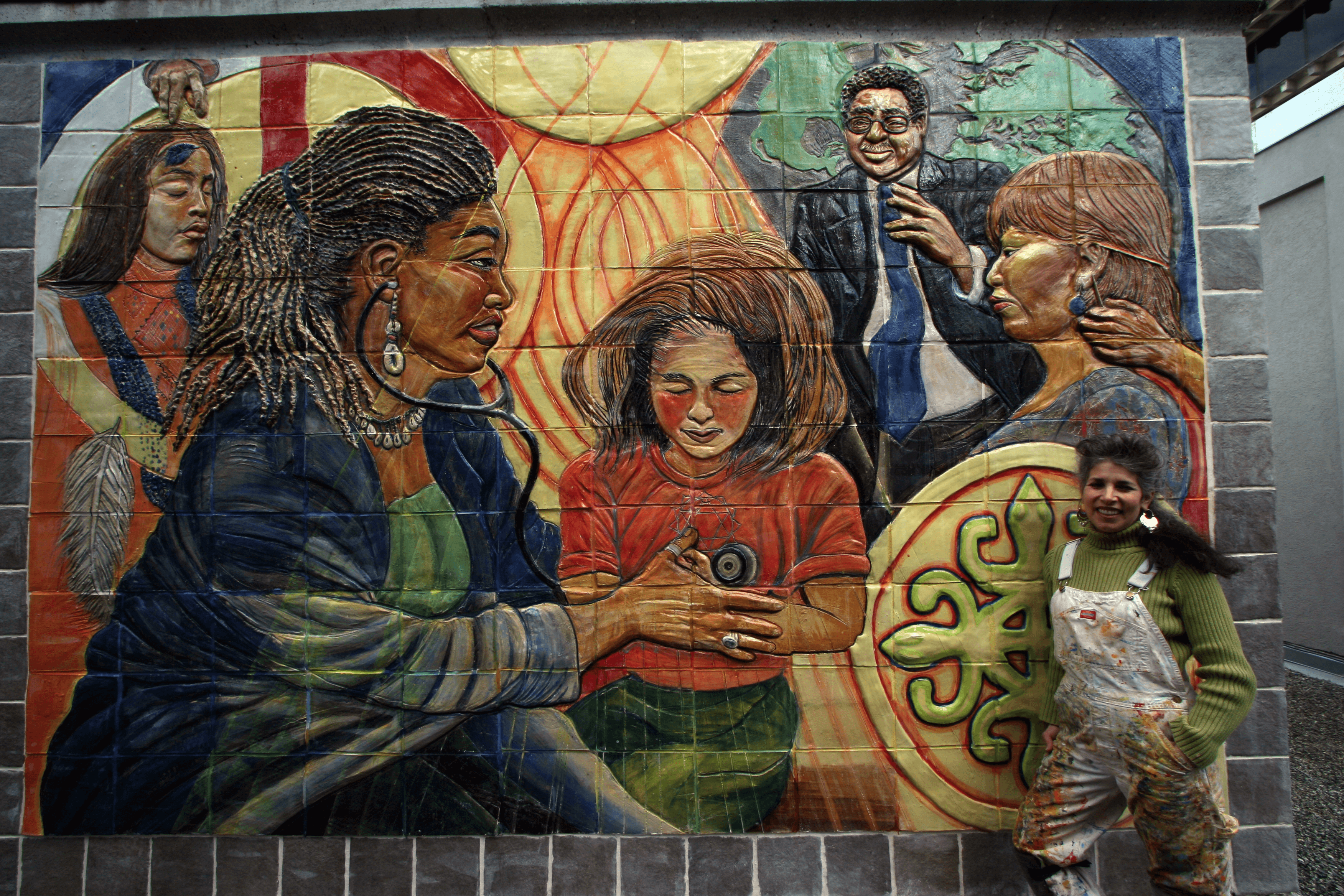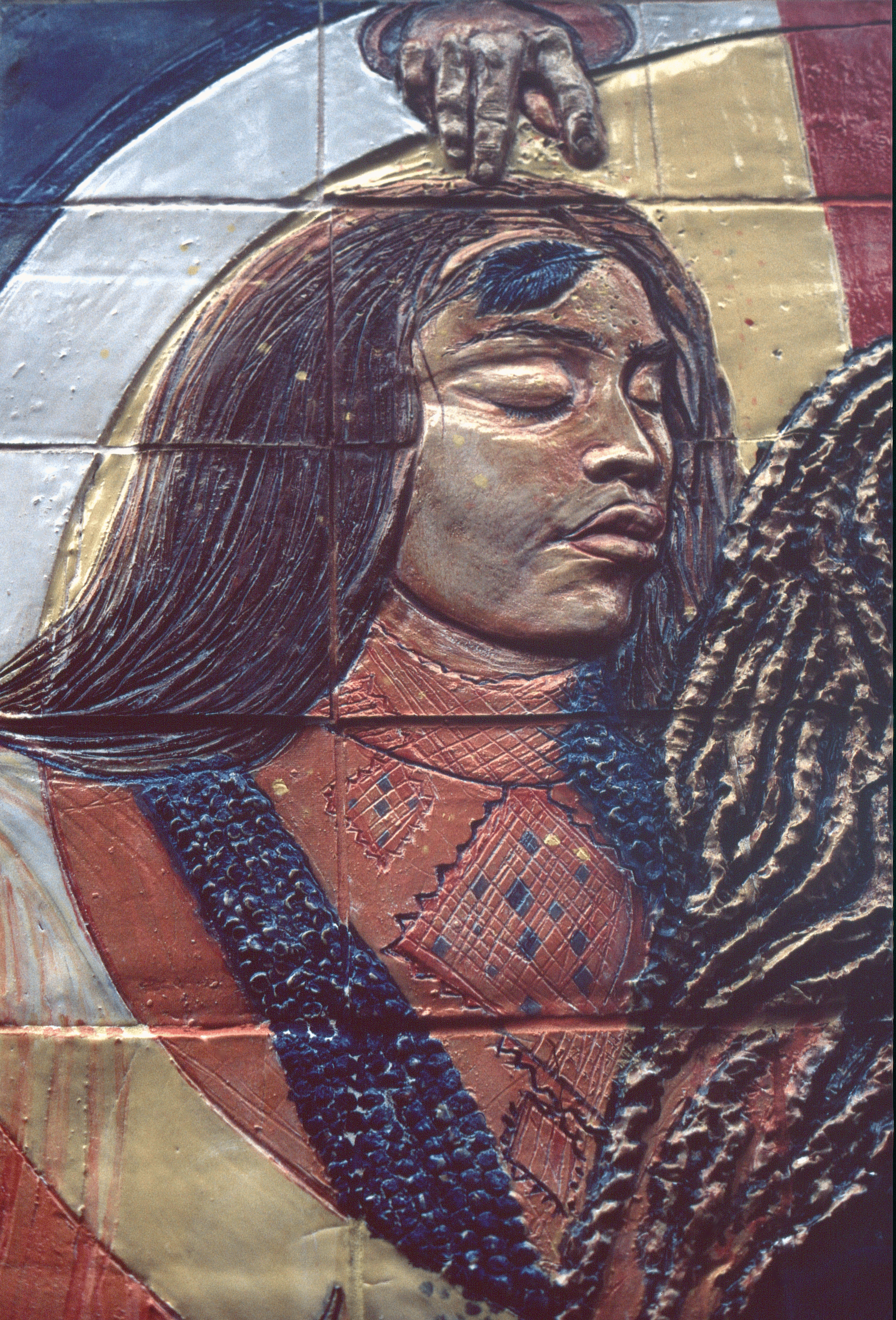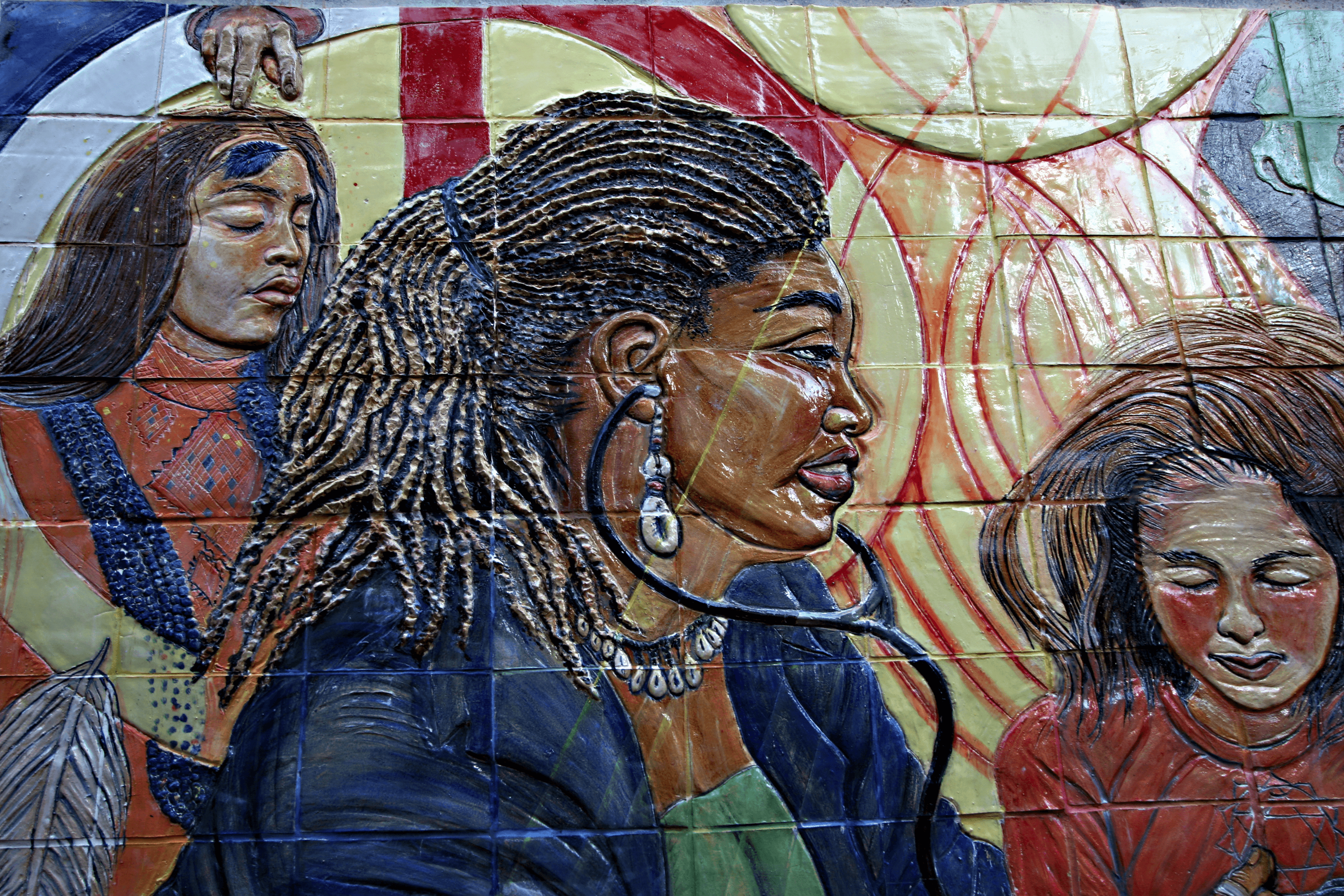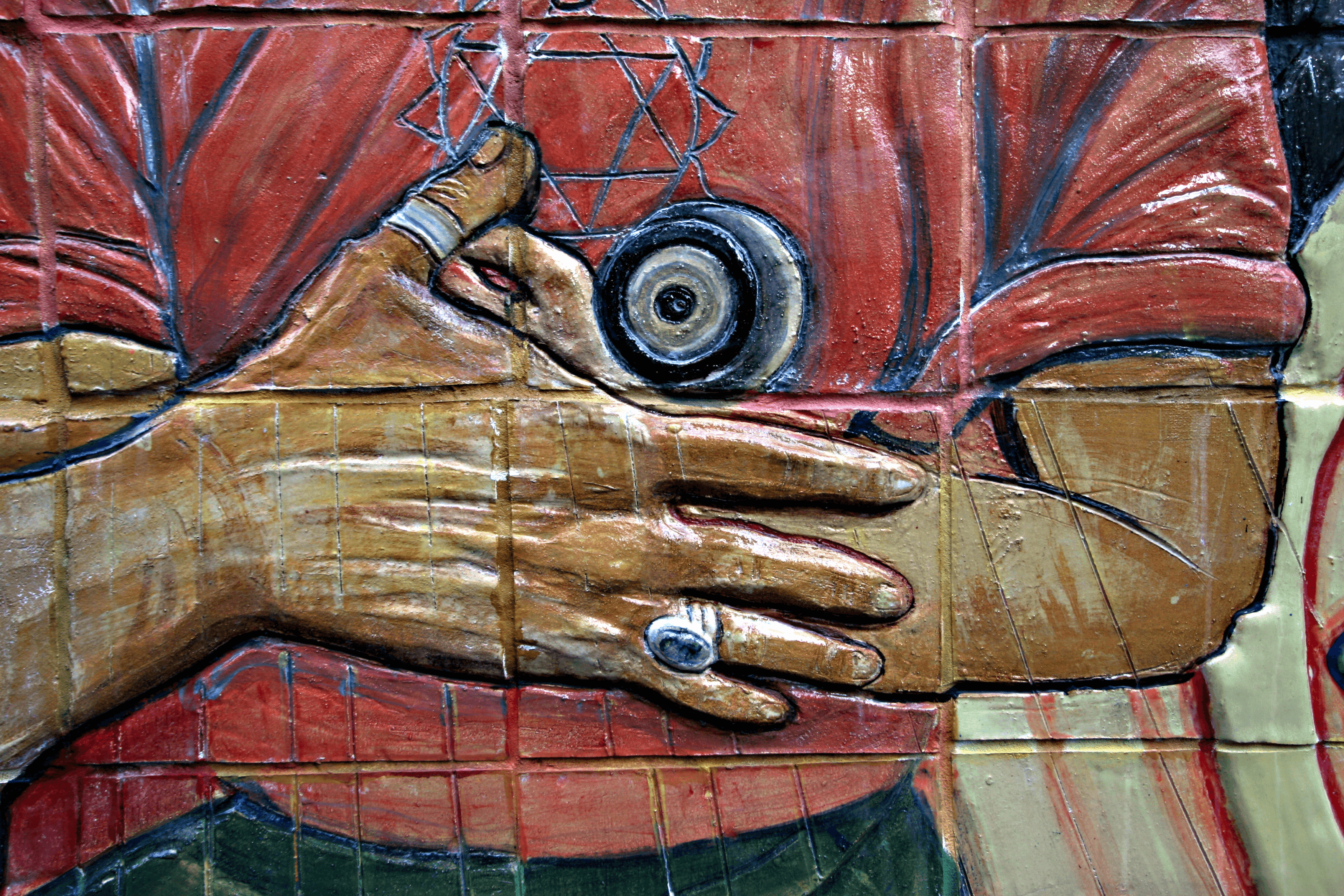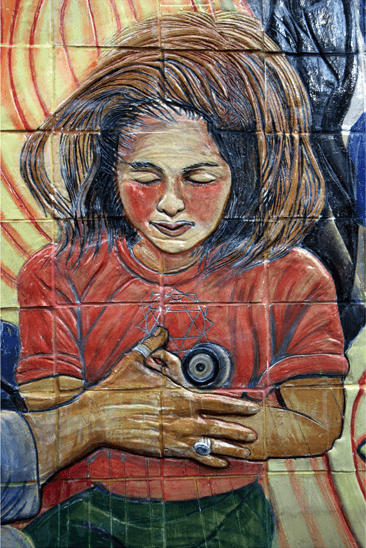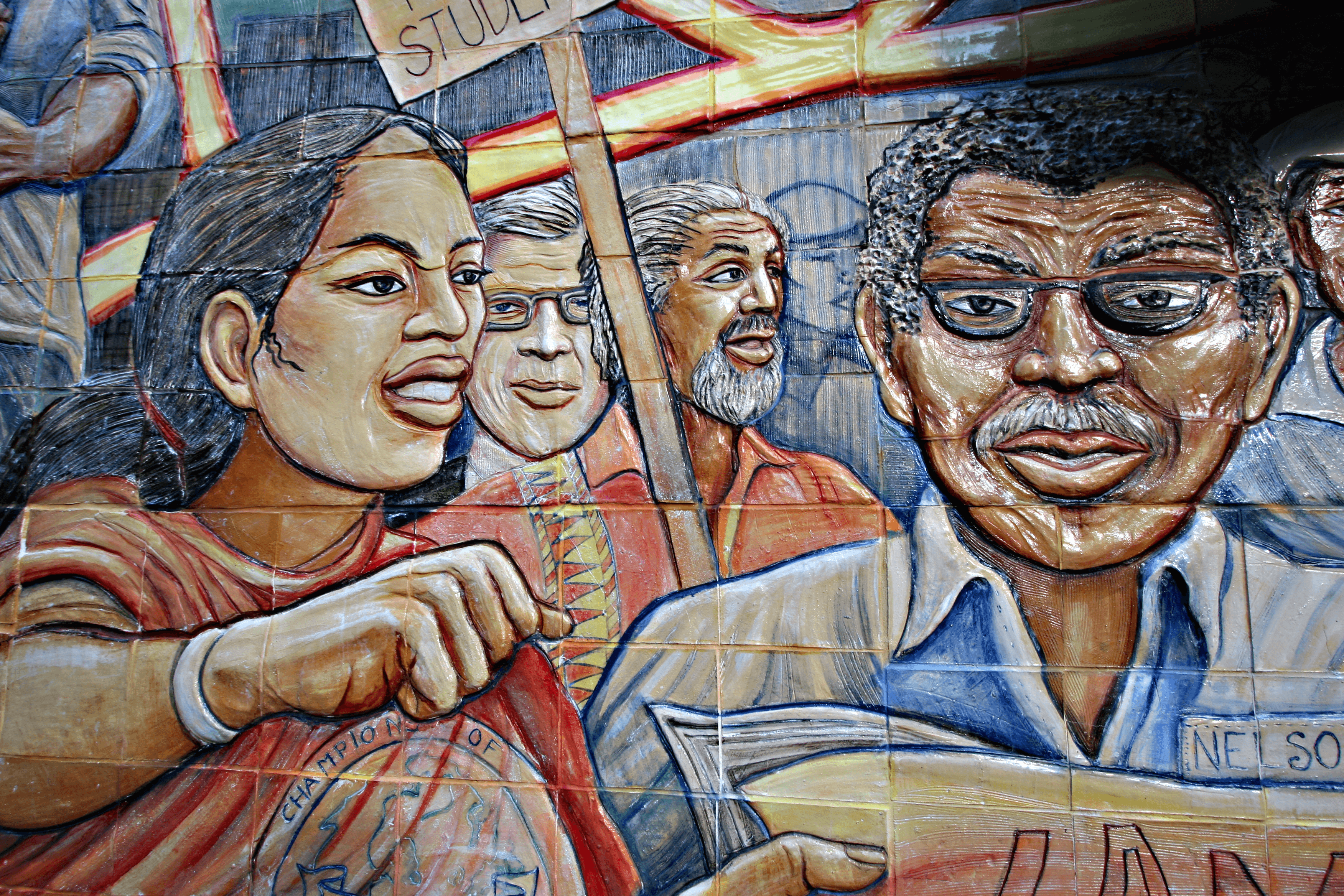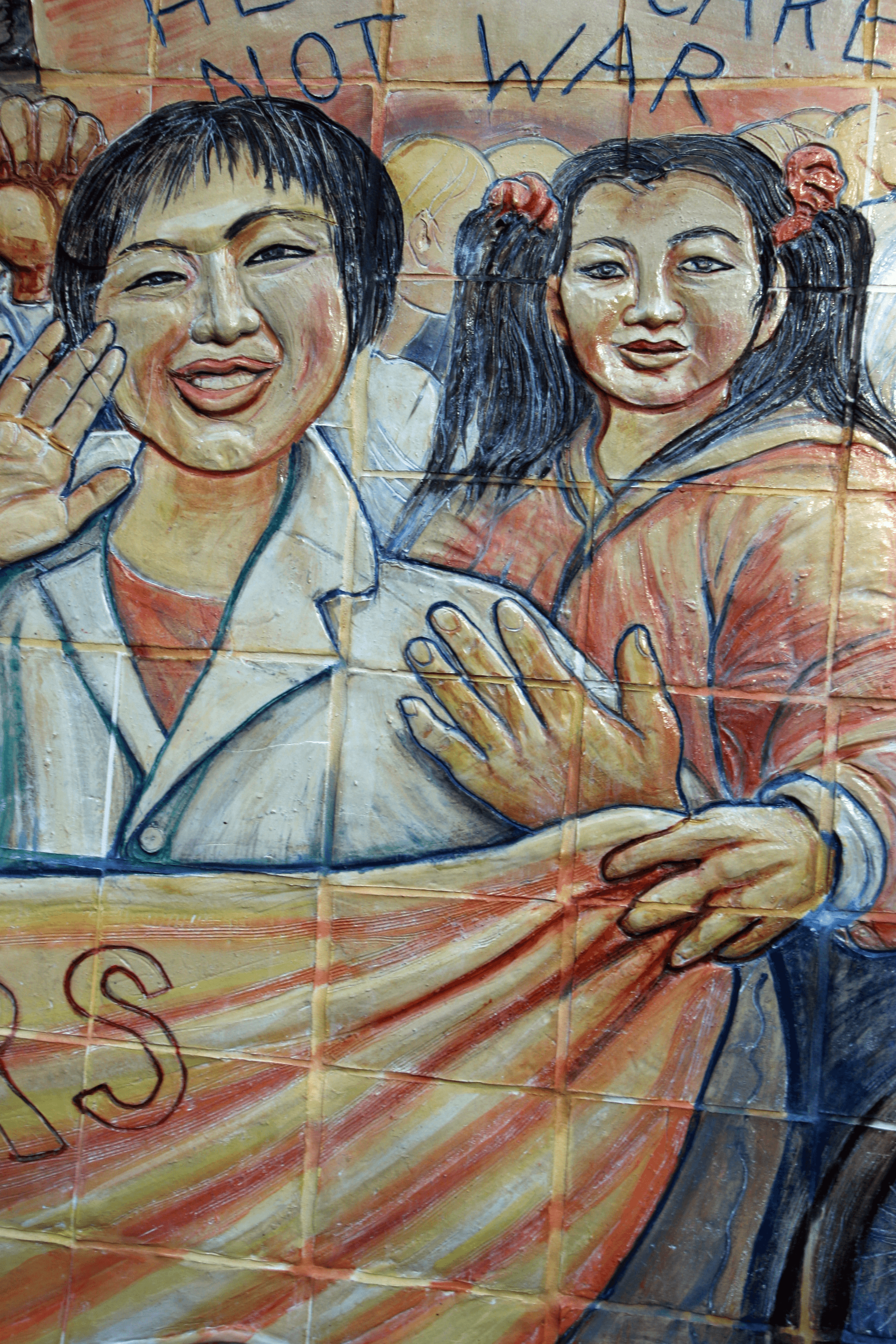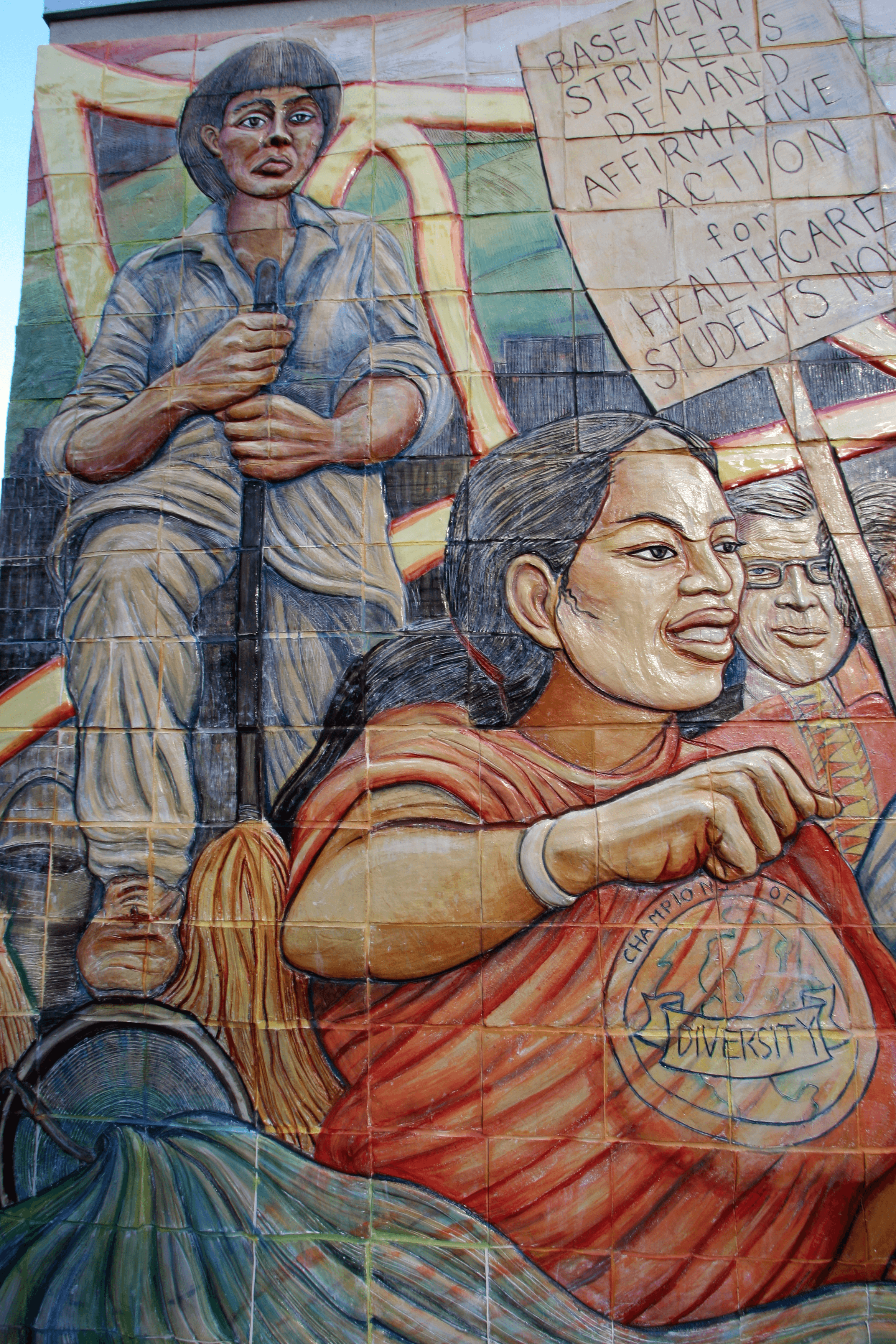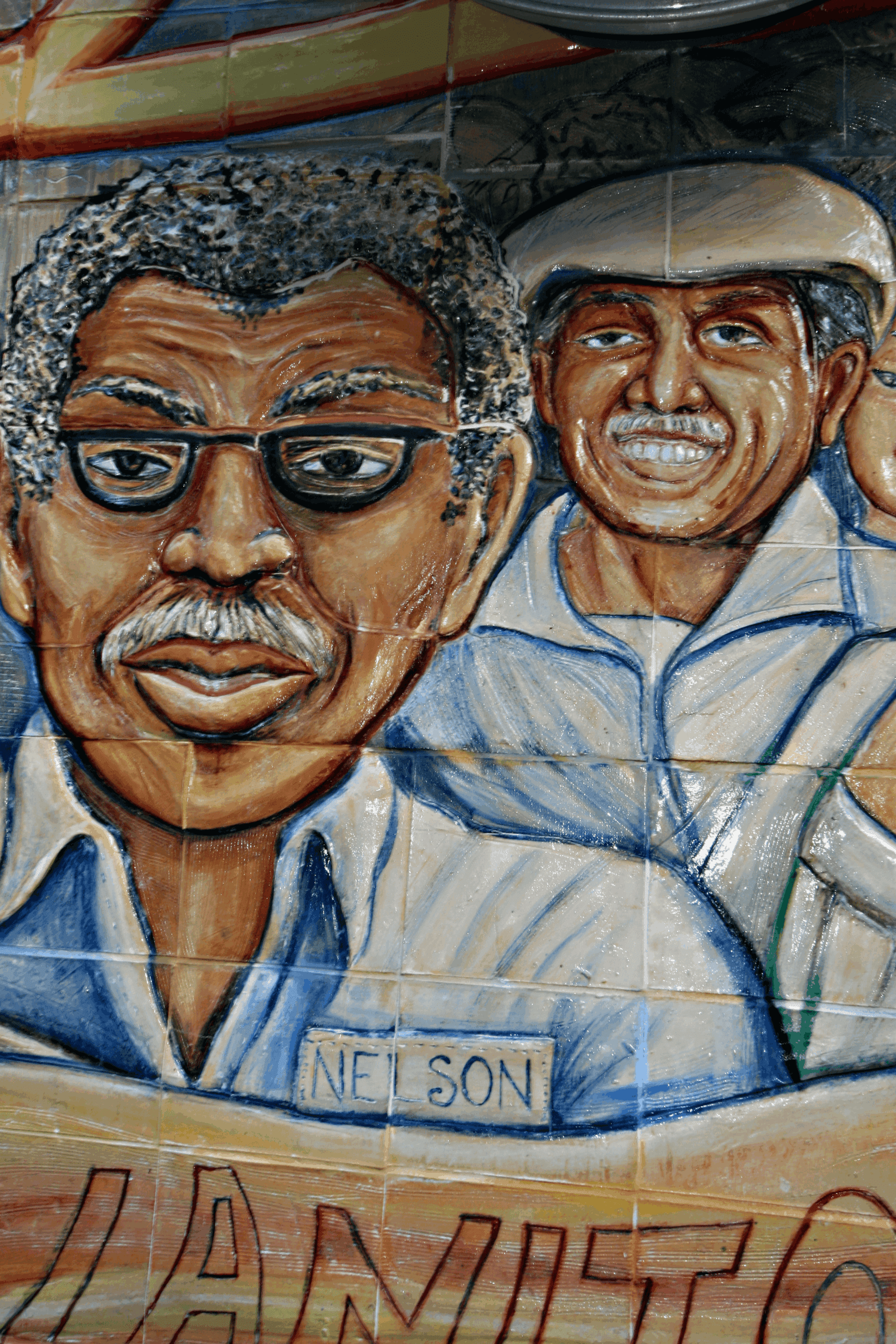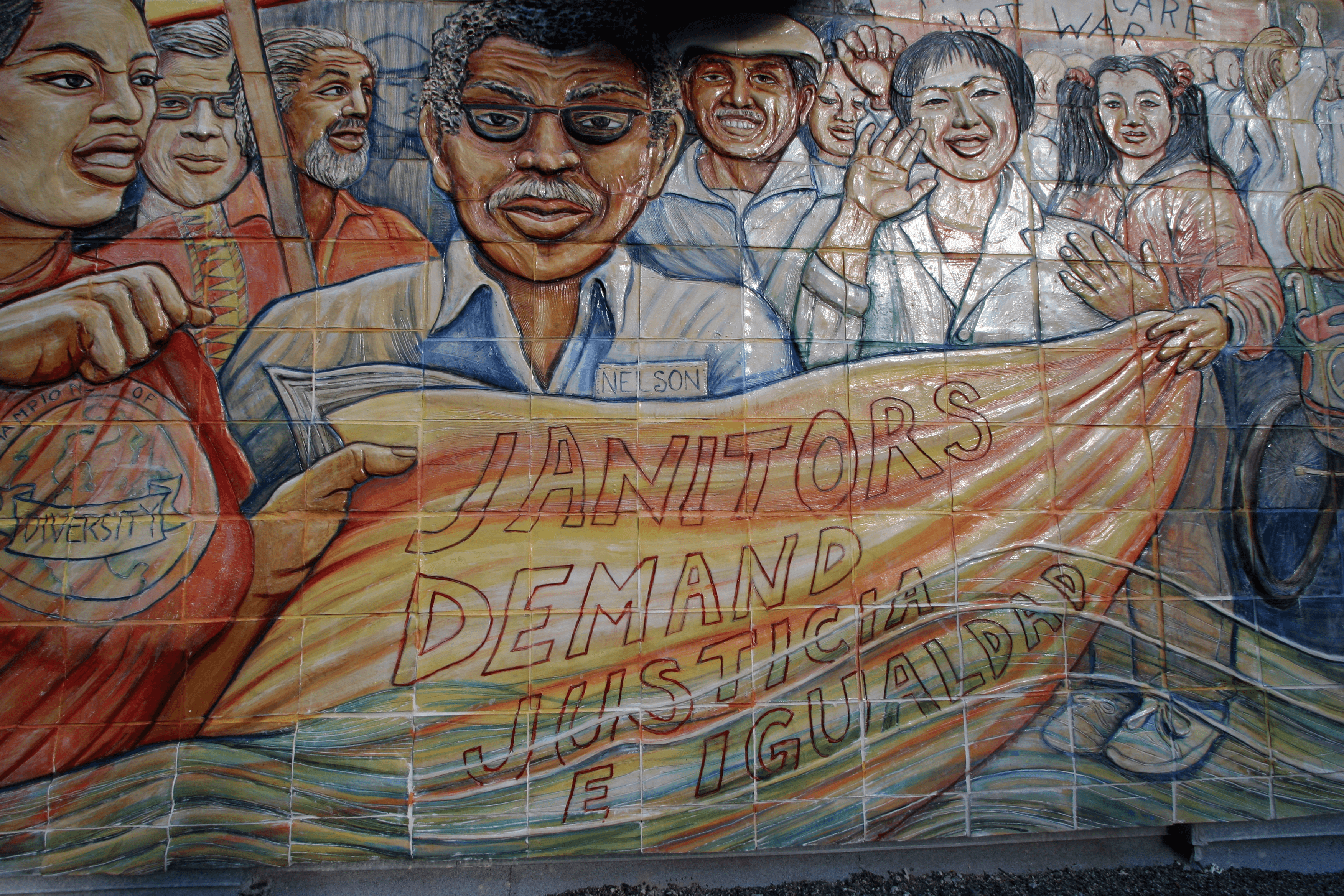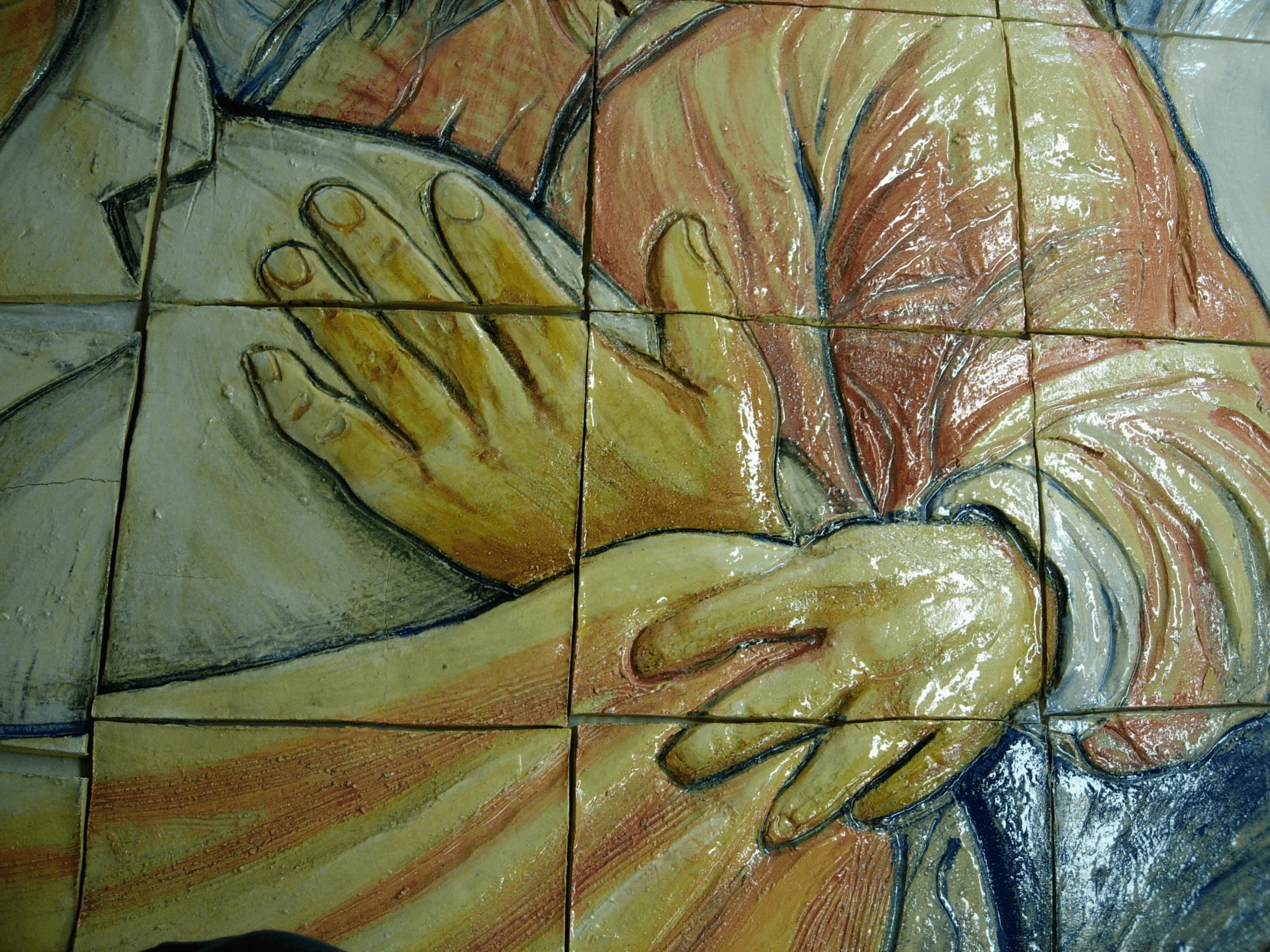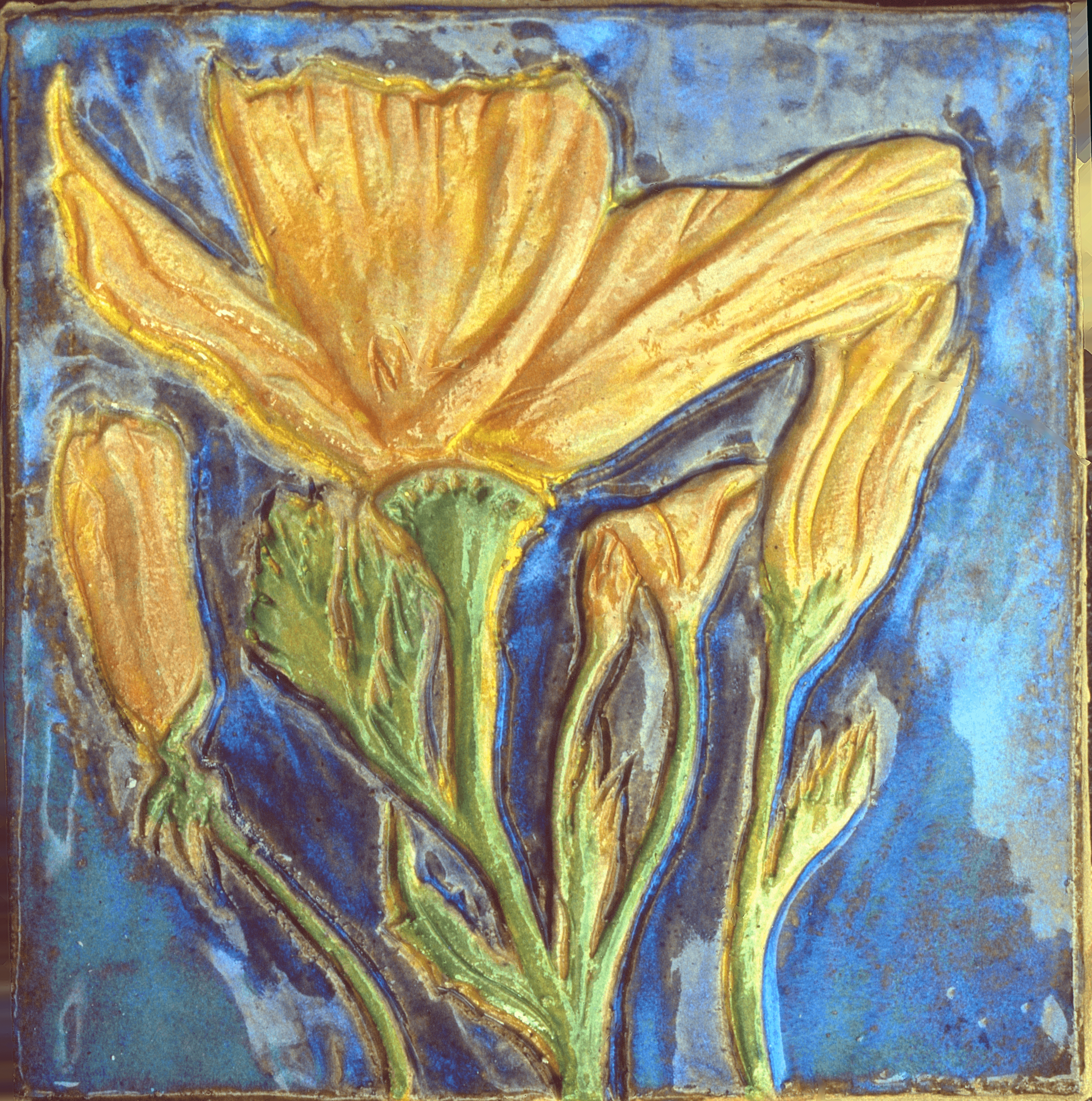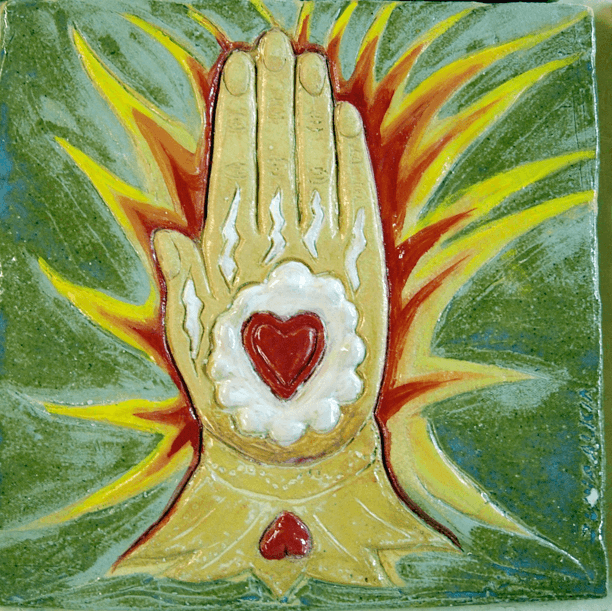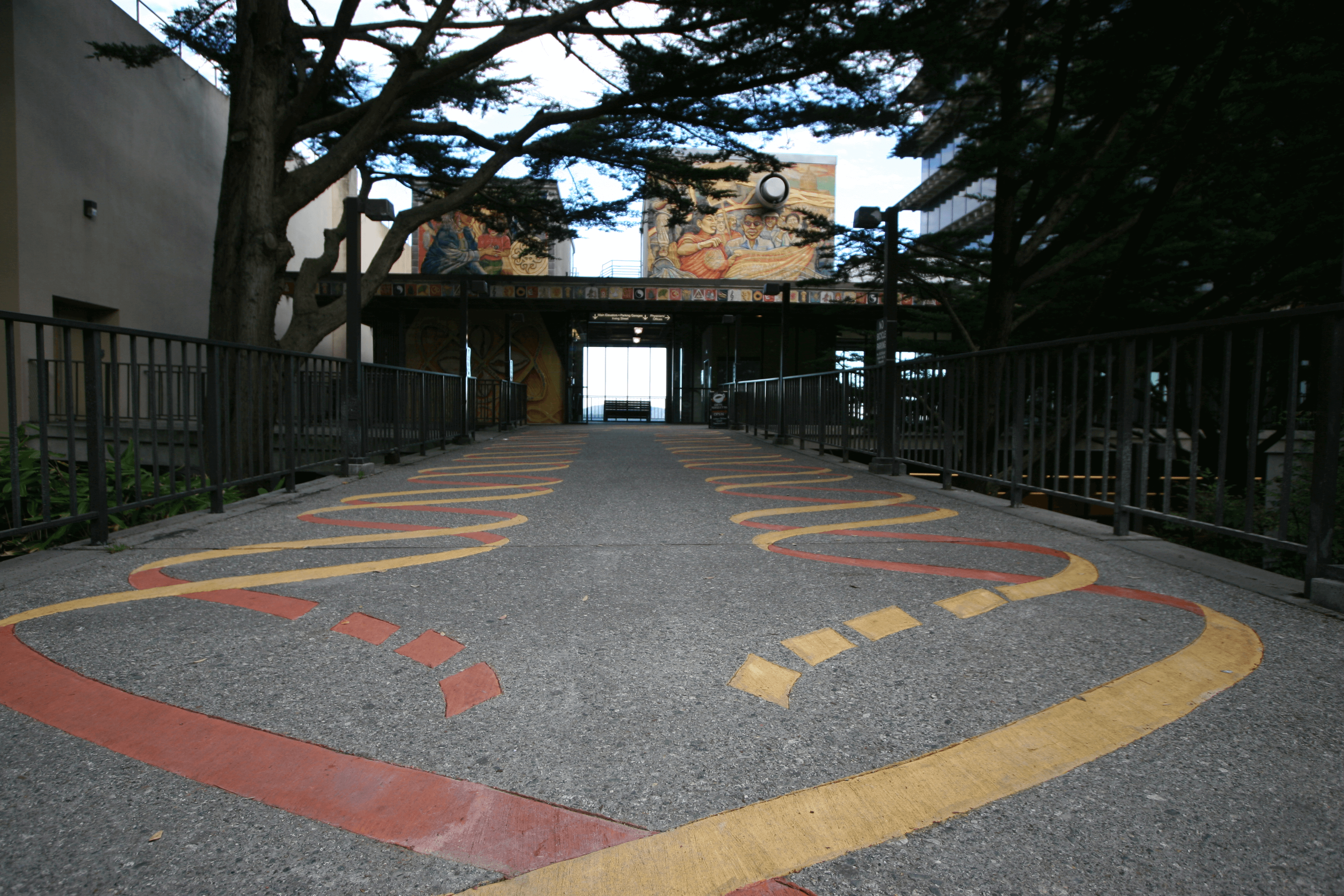SANARTE
Diversity’s Pathway/Sendero de la diversidad, four ceramic bas-relief murals including the ceramic tile frieze, and cement sidewalk. An original work owned and commissioned by the University of California, San Francisco. Ambulatory Care Clinic, UCSF Medical Center, 400 Parnassus Avenue, San Francisco, CA, © 2005. Photo: Anobel Odisho ©2005.
SANARTE: A CELEBRATION OF DIVERSITY
This suite of four murals, including a cementitious tile walkway designed and produced by muralist Juana Alicia celebrates and symbolizes diversity within the concept of unity, and the notion that dualities promote a holistic, vibrant, and ever-changing world.
With a focus on the special history of UCSF, the murals represent healing traditions worldwide; community cooperation; the internal work we do to heal ourselves; and the social, political, and evolutionary movements that have brought about diversity. Collectively, the images emphasize the unique efforts of UCSF’s students, janitors, staff, and faculty to maintain, promote and celebrate diversity.
→ Sketches and Process
→ Ollin
→ Traditions mural
→ ¡STRIKE! mural
→ Tools of Healing
→ Double Helix Pathway
OLLIN • /MOVEMENT
Lower West Wall
This panel is a celebration of the complement of opposites, of unity in diversity. Ollin means movement, earthshaking, or change in Nahuatl, the language of the Aztecs. The icon is found in the Aztec Calendar Stone and symbolizes the struggle for balance and unity through its symmetrical design of equal opposites. The large wave pattern in this mural is a loose interpretation of the traditional Ollin symbol, combined with the mathematical model of an orthogonal oscillation. An orthogonal oscillation is used to describe similar phenomena regarding the unity of opposites in mathematics: “of or relating to a matrix whose transpose equals its inverse.”[1] The cowry shells at the center represent prosperity, fertility and power in cultures ranging from West Africa to Japan to Mesoamerica to Egypt and Greece. The quote from Chancellor J. Michael Bishop’s Nobel Prize acceptance speech brings together the common value of creativity from two very different contexts: science and jazz.
TRADITIONS MURAL
Upper West Wall
This panel depicts healing traditions from many cultures and celebrates relationship and interdependence as key to our survival and prosperity. The protagonists of this panel are pairs (fully or partially seen), further emphasizing the importance of our relationships.
¡STRIKE! MURAL
Upper East Wall
The strike mural celebrates the actions that took place at UCSF in 1968 in support of civil rights, labor rights and peace. Staff, students, and faculty participated in the worldwide movement for equality, peace, and democracy.
At UCSF, both janitors and students staged separate strikes simultaneously: the former for better working conditions as well as affirmative action/campus diversity; the latter in protest of the United States’ bombing of Cambodia. UCSF and Stanford medical, dental, pharmacy and nursing students in white lab coats marched on San Francisco’s City Hall to demand a halt to the war in Southeast Asia.
THE HELIX PATHWAY
The Helix Pathway connects the UCSF Medical Center to its community, running from the Outpatient Clinic Building to the bus stop on Parnassus Avenue. It is the symbolic and physical expression of our diversity: genetic, intellectual, cultural, and medical. The inlaid DNA molecule is shown in the process of replication, a moment of growth and creation. In many ways it is the symbol for the future of life on earth. I use it here to connect us and to celebrate the diversity of humanity and the natural world.
